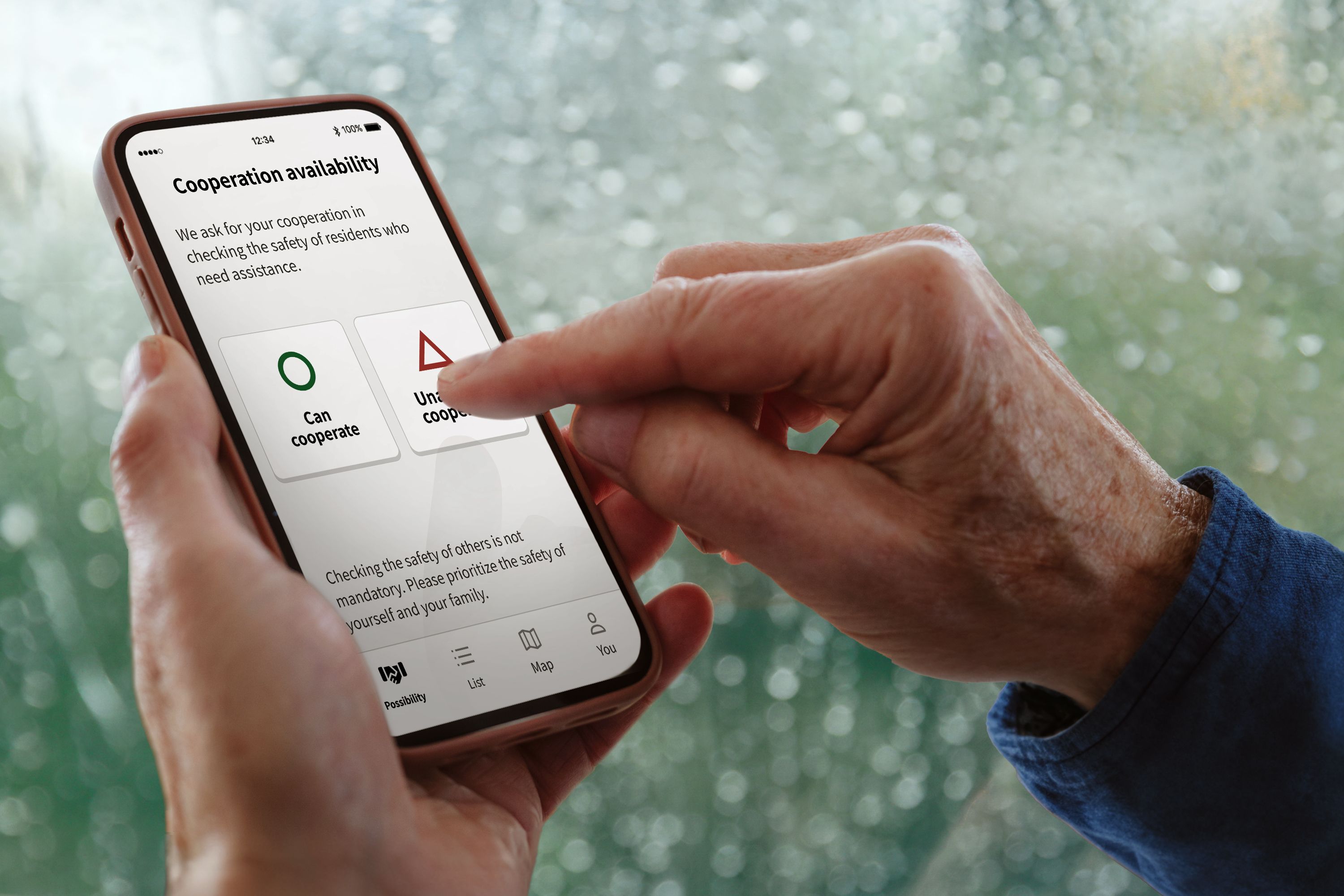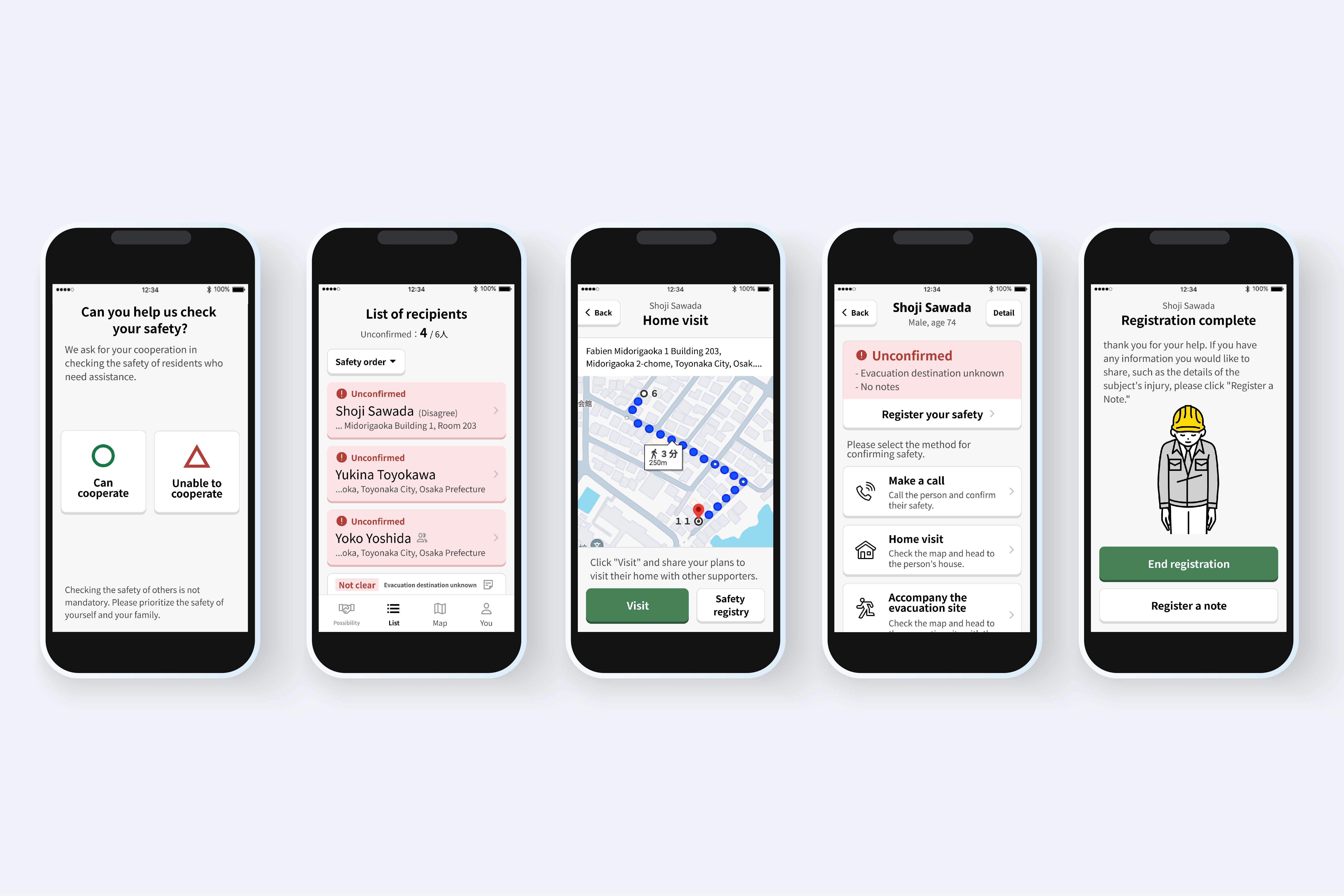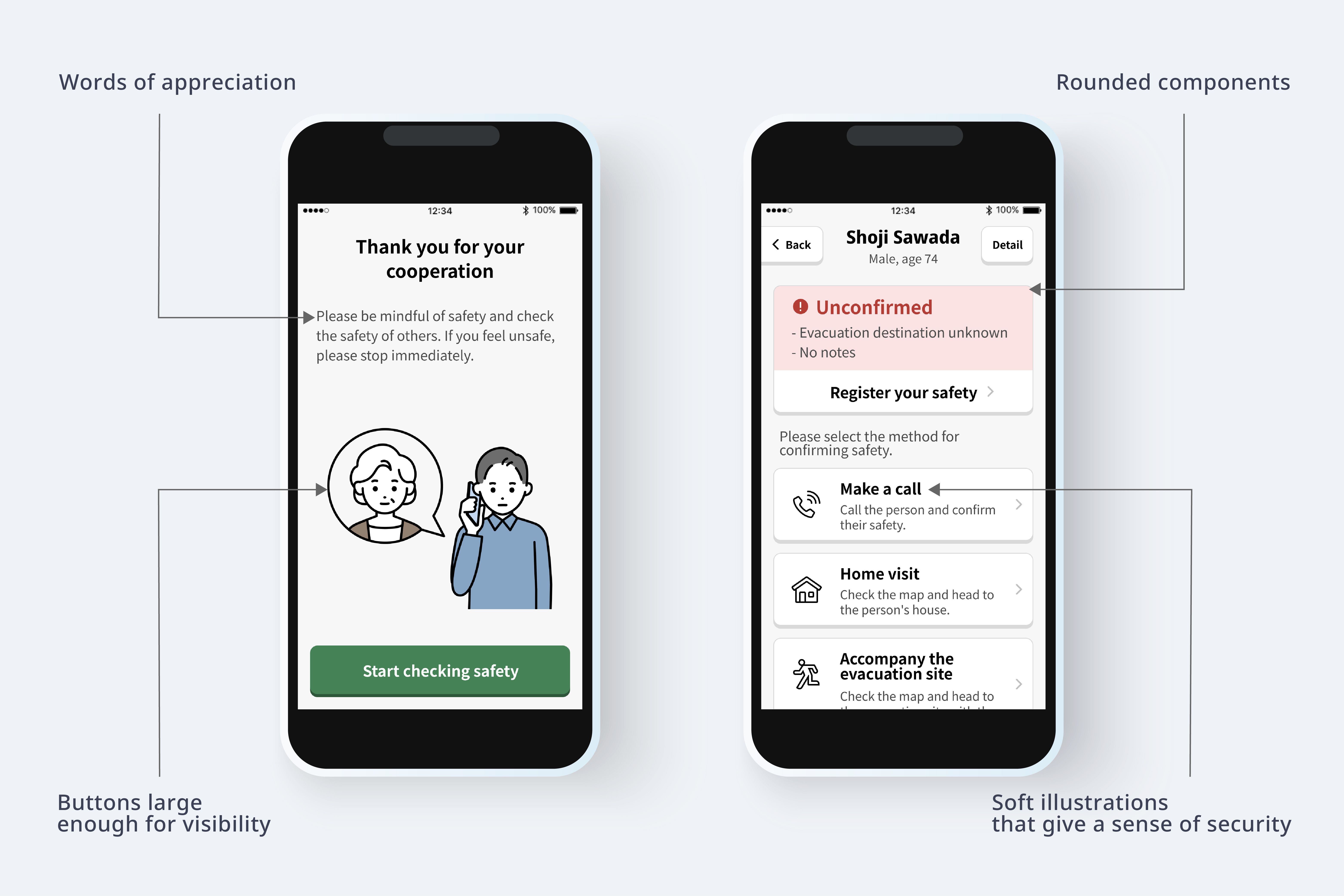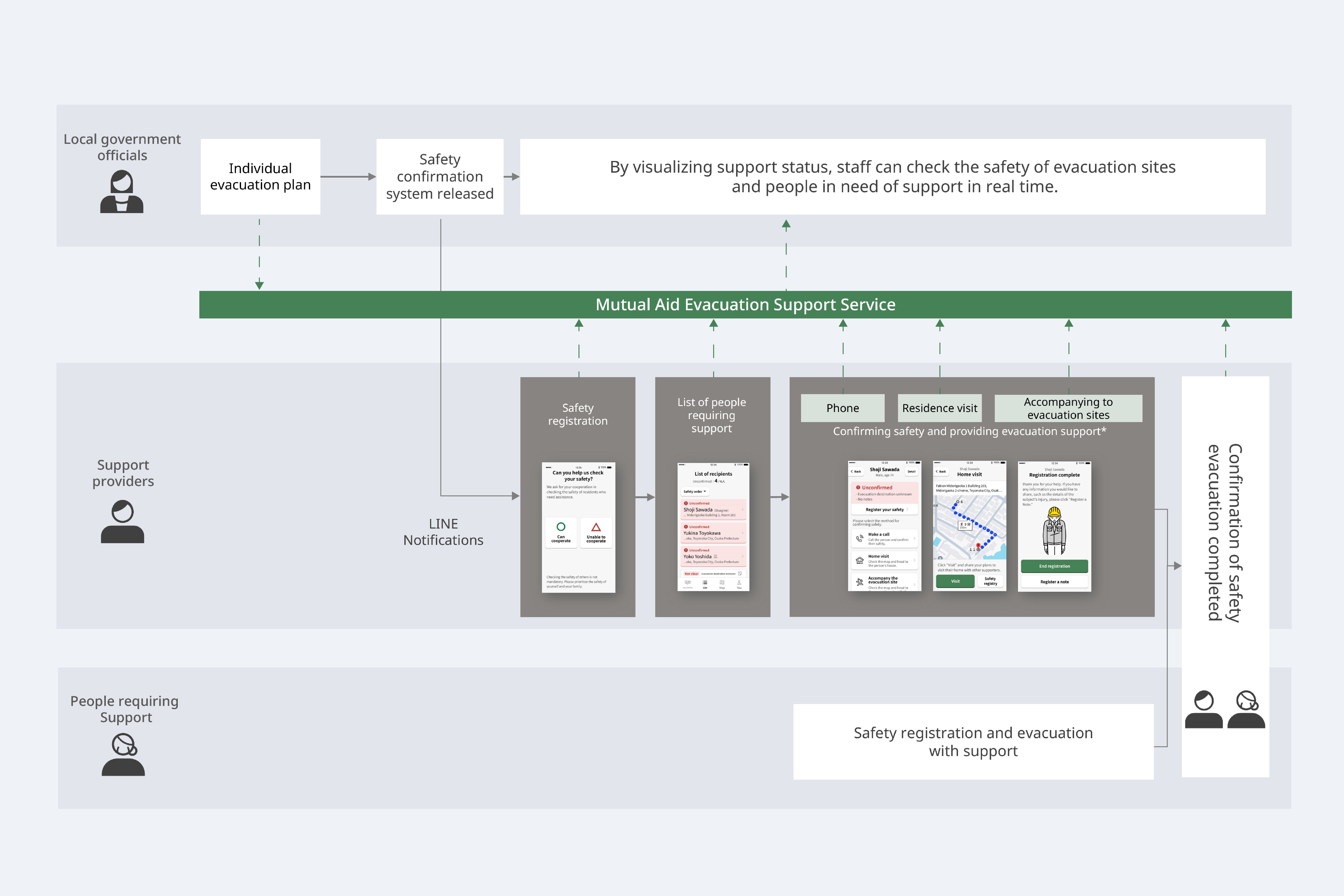
Designers
NEC Corporation: Yoshiteru Tomooka, Naomi Shinada / Loop Design Inc.: Yasuhisa Tawa, Yuzuki Tamai, Keita Imai
Year
2025
Category
Product
Country
Japan
Design Studio / Department
Corporate Design Department

Three questions to the project team
What was the particular challenge of the project from a UX point of view?
Every local government handles emergencies differently, and the design had to support all approaches. For example, in some areas, support providers must call those they assist by phone before going to their home, while in others people can go without calling ahead.
In response to this, we showed different workflows in parallel with steps for those providing assistance, such as 'Call,' 'Go to home,' and 'Accompany to evacuation center.' This facilitated use by any local government by enabling a choice based on their policies or circumstances.
We also set the safety statuses selected by support providers specifically for each local government.
In the UI design, we did whatever we could to mitigate the shock and anxiety of an emergency.
What was your personal highlight in the development process? Was there an aha!-moment, was there a low point?
Our research clearly showed us that many local governments still use analog paper systems.
However, during our trials, we achieved a significant saving of about 440 work hours for local government staff. This affirmed our conviction that we can help to save many lives that would otherwise have been lost.
Trial participants also responded positively in our survey. About 87% of respondents said they would want to use the app if a real emergency occurred. Local government staff also noted the system's utility, describing it as being like 'night and day' compared to working on paper. Seeing the benefits that our work can bring to the world increased our determination to incorporate the direct feedback we got and make the service even better.
Where do you see yourself and the project in the next five years?
Inquiries from several local governments show a growing need to shift from analog to digital systems.
We hope that many local governments adopt the system, particularly in areas with shrinking and aging populations. We will then refine it based on users' experiences, enhancing usability and aligning with those requiring support.
With global climate change worsening, we also expect growing demand outside of Japan, and have received contact from areas such as Hawaii, which has seen significant recent wildfires.
This service spanning welfare and disaster relief is born from Japan's context as a disaster-prone country with an aging, shrinking population. We hope that digital mechanisms can share Japan's concept of mutual aid with the world.


